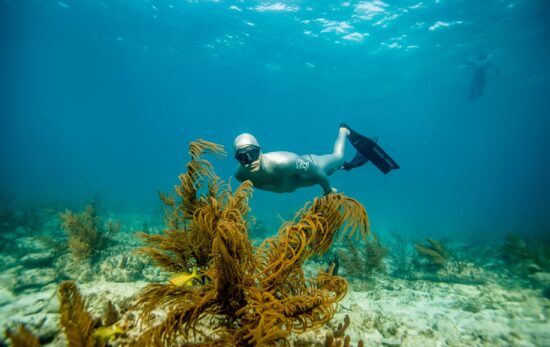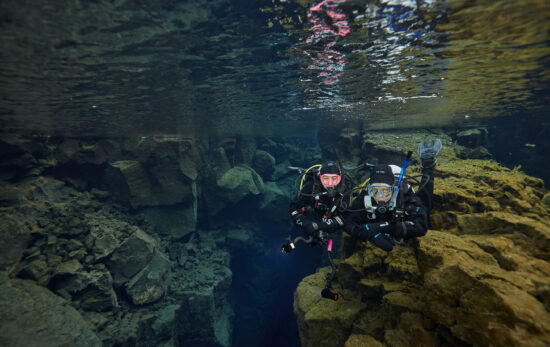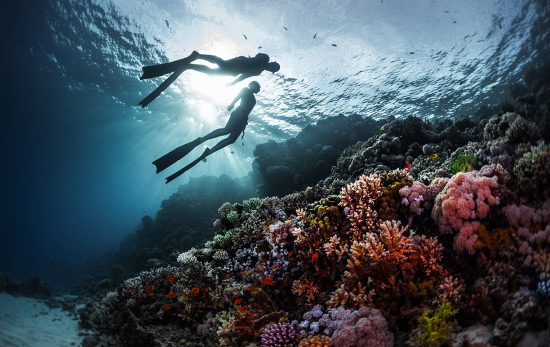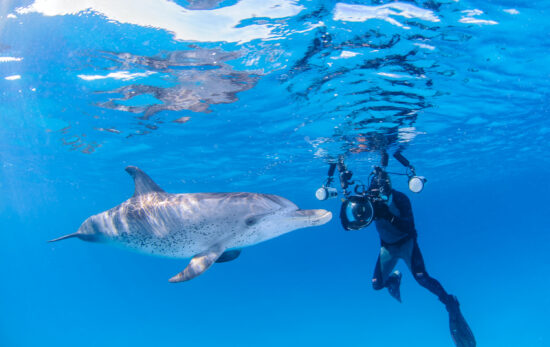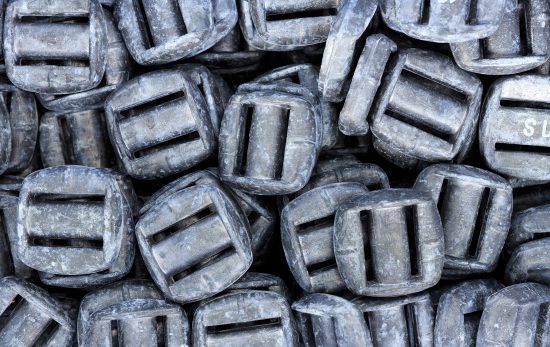So, your ratty old suit finally has more holes than stitching left, or maybe you want to look the part for your Master Freediver class, and you’re ready to upgrade your neoprene. You head to your local Freediving center and suddenly are inundated with options. A lot has changed in the world of rubber—open cell or closed? Smooth skin? And what exactly is a millimeter? No matter the reason, the freediving wetsuit you choose will play a pivotal role in your enjoyment of the sport.
Choosing your next wetsuit is a significant decision and one that’s worth taking your time on. There is nothing worse than trying to relax your way through a breath-up while shivering. We’ve contorted our bodies and struggled into dozens of wetsuits and consulted with the pros to help make sure you get the suit that keeps you in the water the longest.
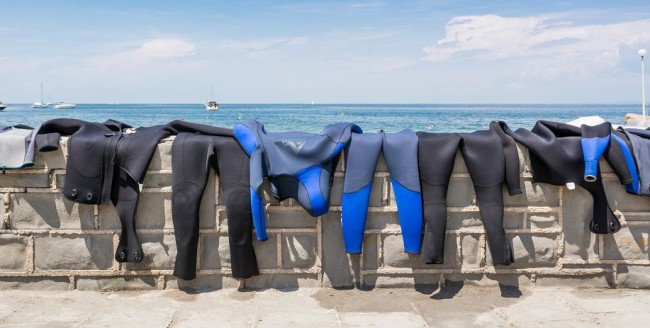
CONSTRUCTION
The first significant difference in wetsuits is their construction. Surf and most scuba suits have a zip-up back with a velcro closure. This makes it easier to get into and out of the suit. These suits are also thicker and have an inside and outside liner of a thin fabric that covers the neoprene.
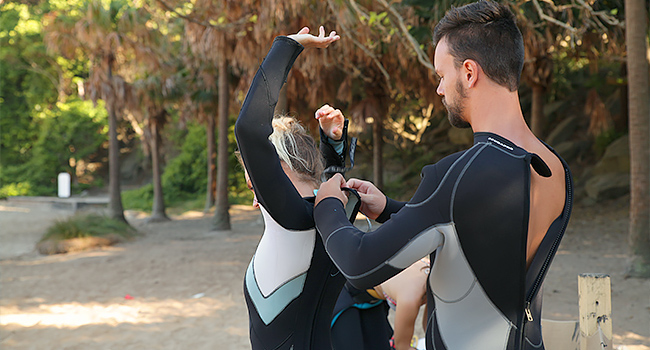
Freediving wetsuits usually consist of mid to high-waisted pants and a hooded top with a between-the-legs closure. Having a two-piece suit also offers the option to wear only the top for those warm-water adventures. These suits are more flexible, form-fitting, and help to prevent water from moving through the suit. They also tend to be more expensive and fragile, so here is some information and tips for buying a new freediving wetsuit.
Single or Double Lining
The lining refers to the thin protective fabric that is bonded to the neoprene. On the outside, this protects the suit from the sun and scratches. It also gives manufacturers a surface to print logos and patterns on. An internal liner protects the suit from finger and toenails, makes it easier to put it on and take it off, and increases the overall structural integrity. The drawback is that an internal liner prevents the neoprene from sticking to your skin and allows water to move in and out of the suit more easily.
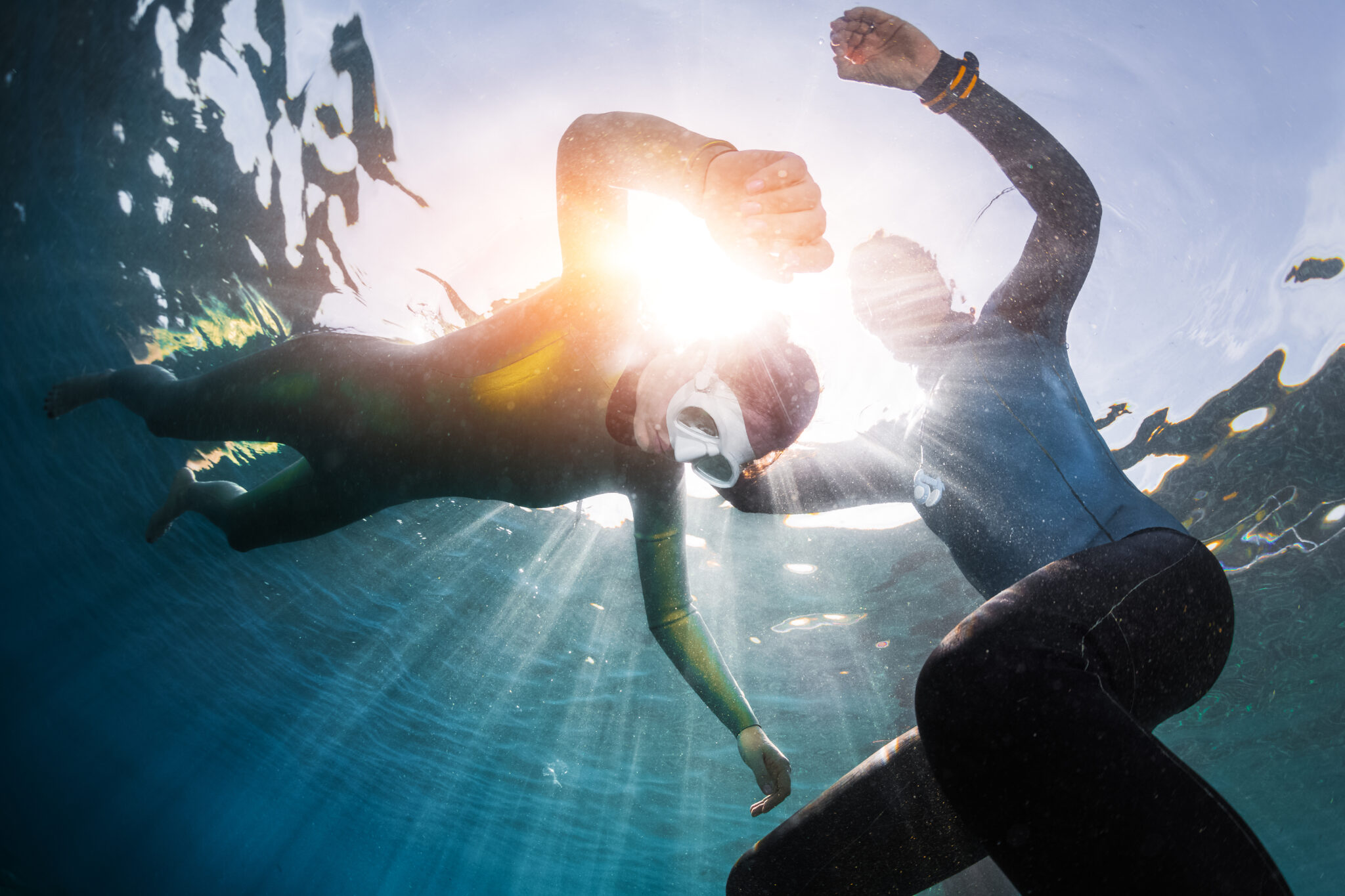
Smooth Skin or Not
It sounds fancy, and it looks it, too. The heat-treated neoprene on the outside of the suit helps it to glide through the water more easily, giving you that little extra advantage. This type of suit is also better at blocking wind. The downside is that they are more expensive, extremely fragile and prone to tearing. Usually, they are reserved for line diving and apnea enthusiasts.
Open Cell or Closed
This refers to the bare neoprene having a smooth skin treatment or a liner. No liner and no heat treatment equals open cell (most common freedive suits). A smooth, shiny surface or liner equals closed.
By far, the most popular freediving suits are single-liner (outside) open cell (inside). This offers the durability of an outside liner but the skin-clinging, water-stopping warmth of open cells against the skin. Usually, it is recommended to use soapy water or diluted conditioner to help get it on without tearing the fragile interior.
To choose the right suit, you first need to know what it is going to be used for. A smooth skin open cell suit would have a very short life if it were used for spearfishing around reefs. Just like a double-lined closed cell suit with a chest pad and reinforced elbows and knees might not perform as well on the line.
THICKNESS
The next big decision when buying a new freediving wetsuit is thickness. This is greatly a personal choice as some of us run cold or hot and are acclimated to different temperatures. As a general guideline:
- Use a 3mm for water temperatures of 26C-21C (80F-70F)
- Use a 5mm for water temperatures of 21C-15C (70F-60F)
- Use a 7mm for water temperatures of 15C-10C (60F-50F)
Think about where you will use this suit and how you generally feel in the water. Generally, you want to wear the thinnest suit possible for more flexibility. But if you are unsure, remember that it is easier to add a little weight or flush the top with some cool water than it is to try and enjoy yourself while cold.
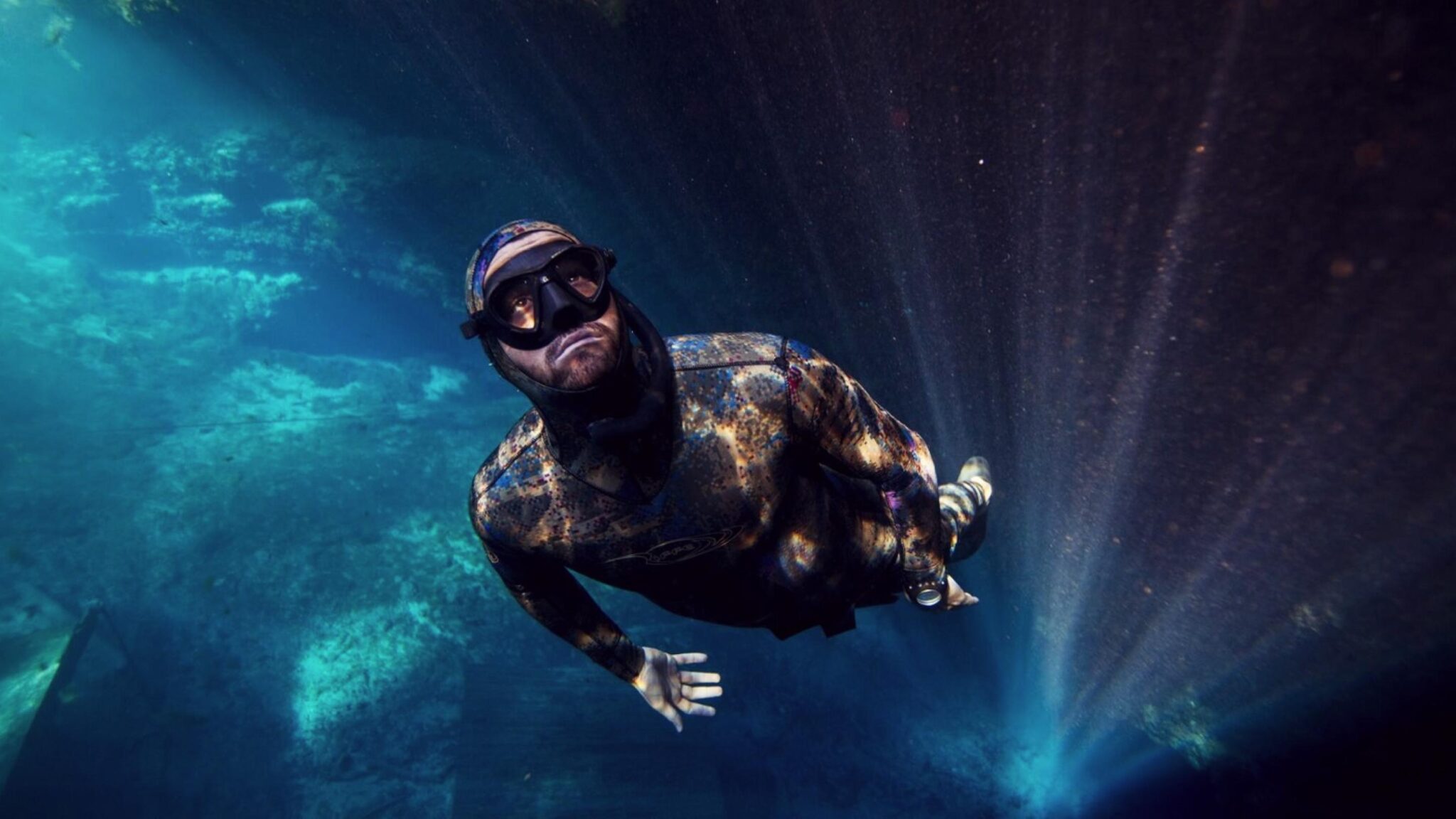
OTHER CONSIDERATIONS
The best tips for buying or the most important things to consider when getting ready to make the purchase of a freediving westuit are:
Fit
The truth is a good suit should be a pain to put on. It should fit snuggly to keep water movement to a minimum but have enough flexibility to be comfortable to move in and wear for hours on end.
How Will You Use the Suit
Do you plan to baby the suit and use a lubricant every time you put it on? Will you use it just for line diving, or will this be an everyday take it on and off in a parking lot and hang it in the sun to dry suit? Will the smooth surface and increased glide of the smooth skin be more of an advantage than the UV-resistant, more durable single-lined suit? All of these questions are important to answer when purchasing a wetsuit. Your local PADI Freediving Center can also help you find the right suit for the way you plan to freedive.

Being comfortable and relaxed in the water is one of the basic fundamentals of freediving, and no one piece of kit can make a bigger difference than your wetsuit. Even in the most idyllic settings, cold diving is not fun diving. We hope this helps you make an informed decision when you buy your next freedive wetsuit and keeps you comfortable on your dives.

